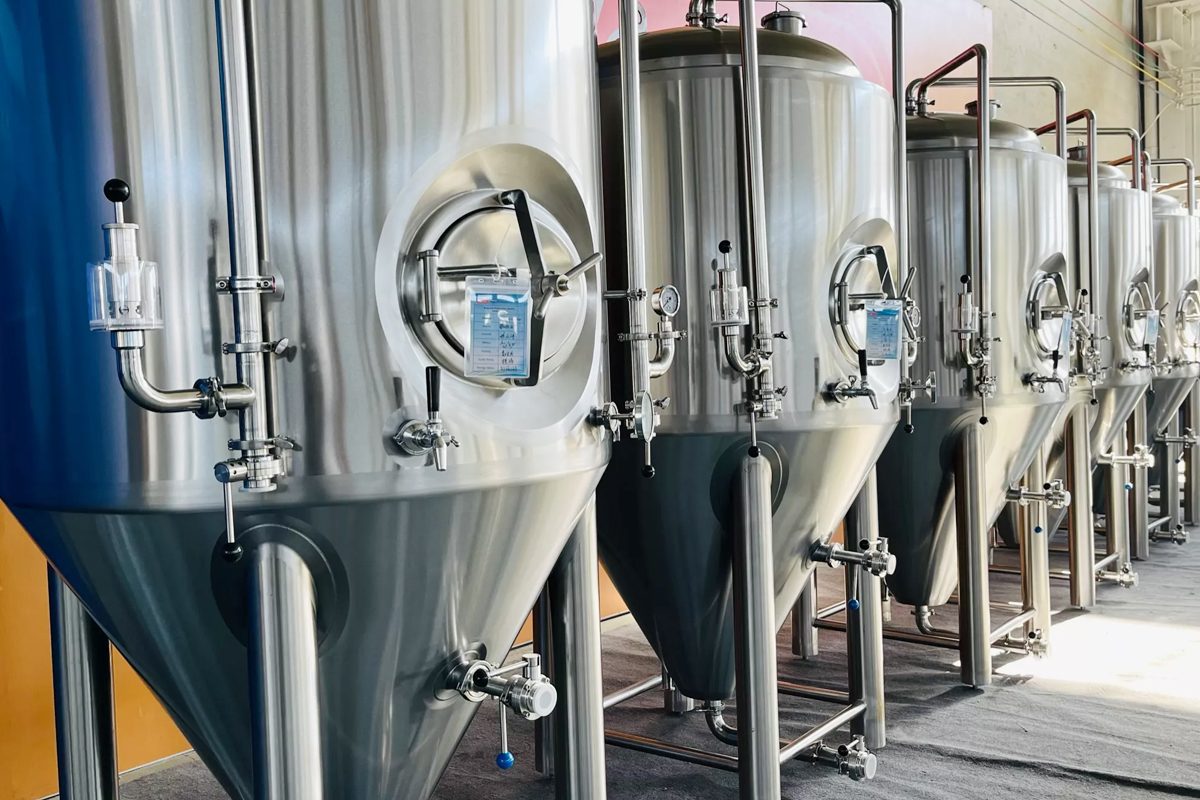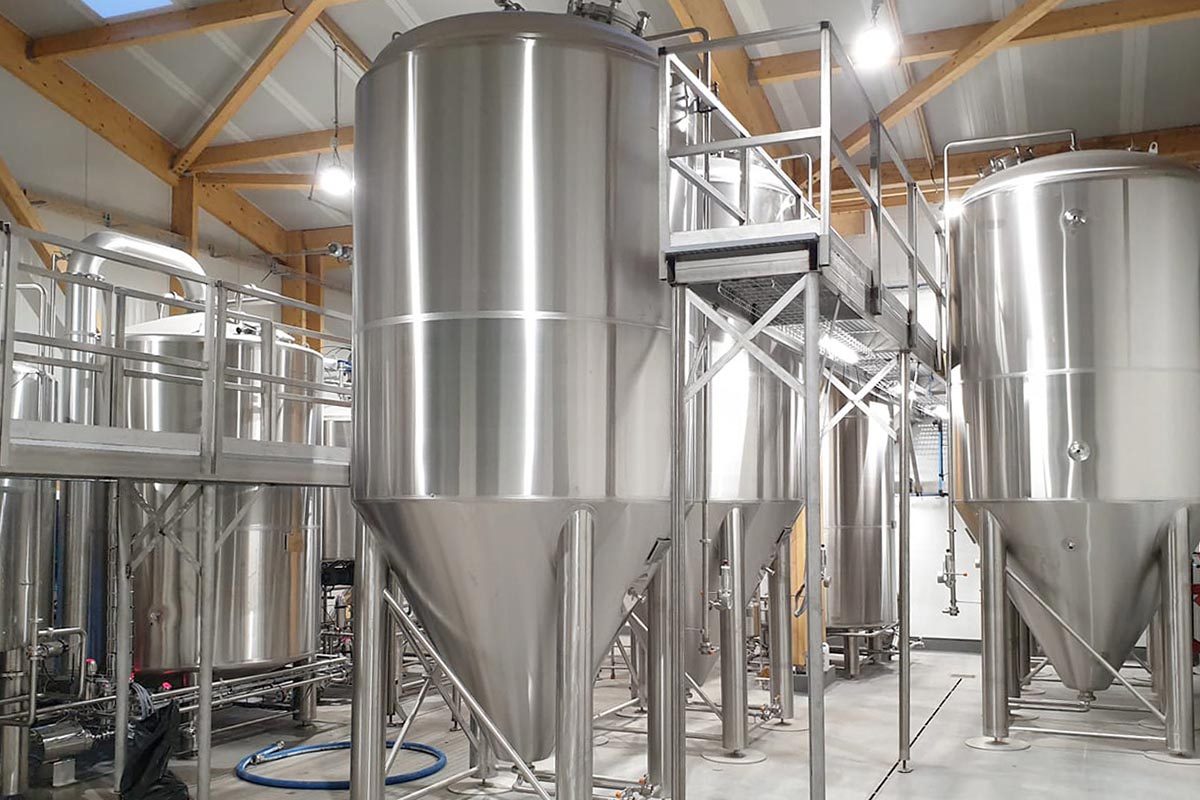
Beer Fermentation Process
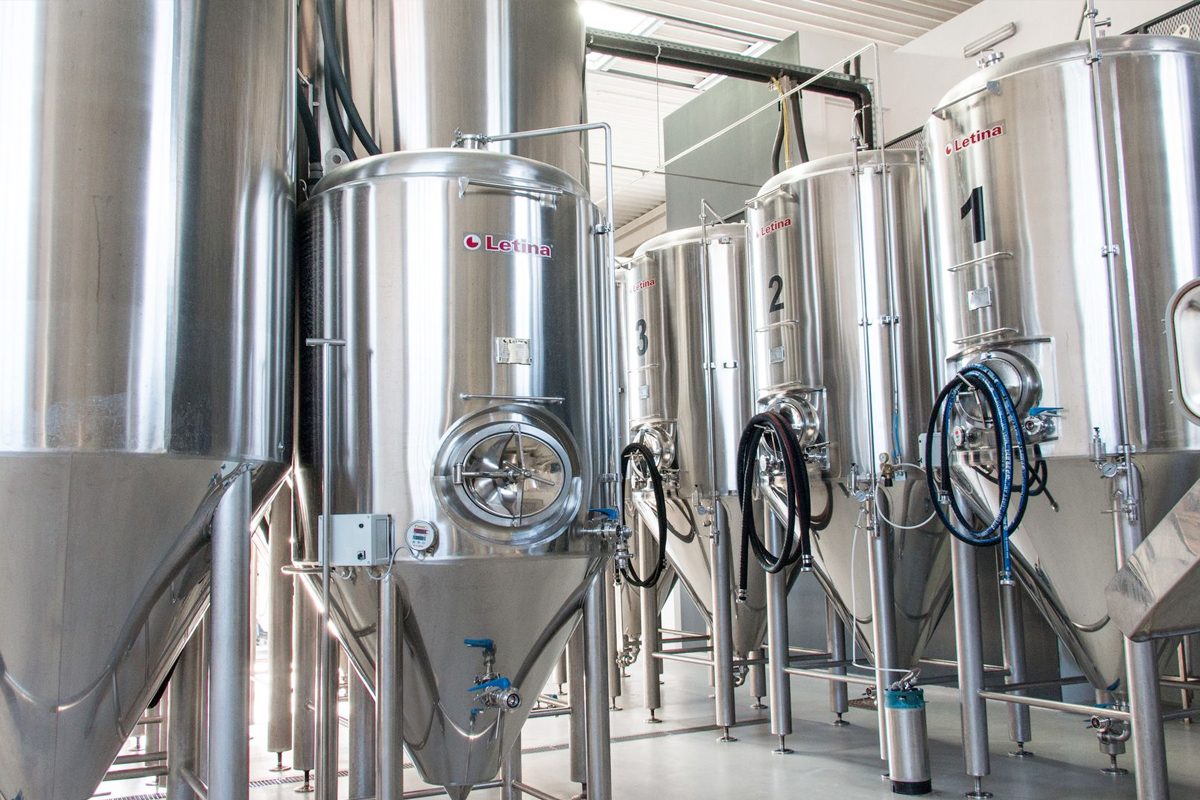
Understanding Fermentation
The Science of Fermentation
At its core, fermentation is a metabolic process in which microorganisms, specifically yeast in brewing, convert carbohydrates into alcohol and carbon dioxide under anaerobic conditions (without oxygen). The primary biochemical pathway involved in beer fermentation is glycolysis, followed by alcoholic fermentation.
- Glycolysis: This is the initial stage where glucose, derived from maltose and other fermentable sugars in the wort, is broken down into pyruvate. This process occurs in the cytoplasm of yeast cells and produces two molecules of ATP (adenosine triphosphate), which are used as an energy source by the yeast.
- Alcoholic Fermentation: Once pyruvate is formed, it undergoes decarboxylation, resulting in the production of acetaldehyde. Acetaldehyde is then reduced to ethanol (alcohol) with the help of the enzyme alcohol dehydrogenase. The overall chemical equation for this process is: C6H12O6 → 2C2H5OH+2CO2. Here, one molecule of glucose (C6H12O66 ) is converted into two molecules of ethanol (C2H5OH) and two molecules of carbon dioxide (CO2). The CO2 contributes to the beer’s carbonation, while ethanol is the primary alcohol component.
- Secondary Metabolites: In addition to ethanol and CO2, yeast metabolism produces a range of secondary metabolites, including esters, phenols, and higher alcohols. These compounds contribute to the aroma and flavor of beer. For instance, esters can impart fruity notes, while phenols might add spicy or smoky characteristics.
Role of Yeast
Yeast is a unicellular fungus that plays an indispensable role in brewing. It not only drives the fermentation process but also significantly influences the beer’s taste, aroma, and texture.
- Types of Yeast: The two primary types of yeast used in brewing are Saccharomyces cerevisiae (ale yeast) and Saccharomyces pastorianus (lager yeast). Ale yeast ferments at warmer temperatures (typically 15-24°C) and is known for producing a wide range of flavors, including fruity and spicy notes. Lager yeast, on the other hand, ferments at cooler temperatures (7-13°C), resulting in cleaner, crisper beers with fewer esters and phenols.
- Yeast Metabolism: Yeast metabolizes sugars in the wort to produce ethanol and carbon dioxide. However, yeast activity is not limited to these primary metabolites. It also produces a variety of other compounds that contribute to the beer’s sensory profile. The specific strain of yeast, fermentation temperature, and wort composition all influence these byproducts, which can include esters (fruity flavors), phenols (spicy or smoky flavors), diacetyl (buttery flavors), and fusel alcohols (stronger alcohol notes).
- Yeast Health and Management: Yeast health and vitality contribute to successful fermentation. Factors such as oxygen availability, nutrient levels, and temperature can all affect yeast performance. Oxygen is especially important during the initial stages of fermentation because it helps the yeast synthesize sterols and unsaturated fatty acids, which help maintain the integrity of the cell membrane. Proper yeast management, including pitching the right amount of healthy yeast and providing adequate nutrients, ensures vigorous and complete fermentation.
- Yeast Lifecycle: The lifecycle of yeast during fermentation includes several phases: lag, log (exponential growth), stationary, and flocculation. During the lag phase, yeast acclimates to the wort environment, absorbing oxygen and nutrients. The log phase sees rapid yeast reproduction and active fermentation. As nutrients become depleted, the yeast enters the stationary phase, where it continues to ferment residual sugars at a slower rate. Finally, during flocculation, yeast cells clump together and settle out of suspension, clarifying the beer.
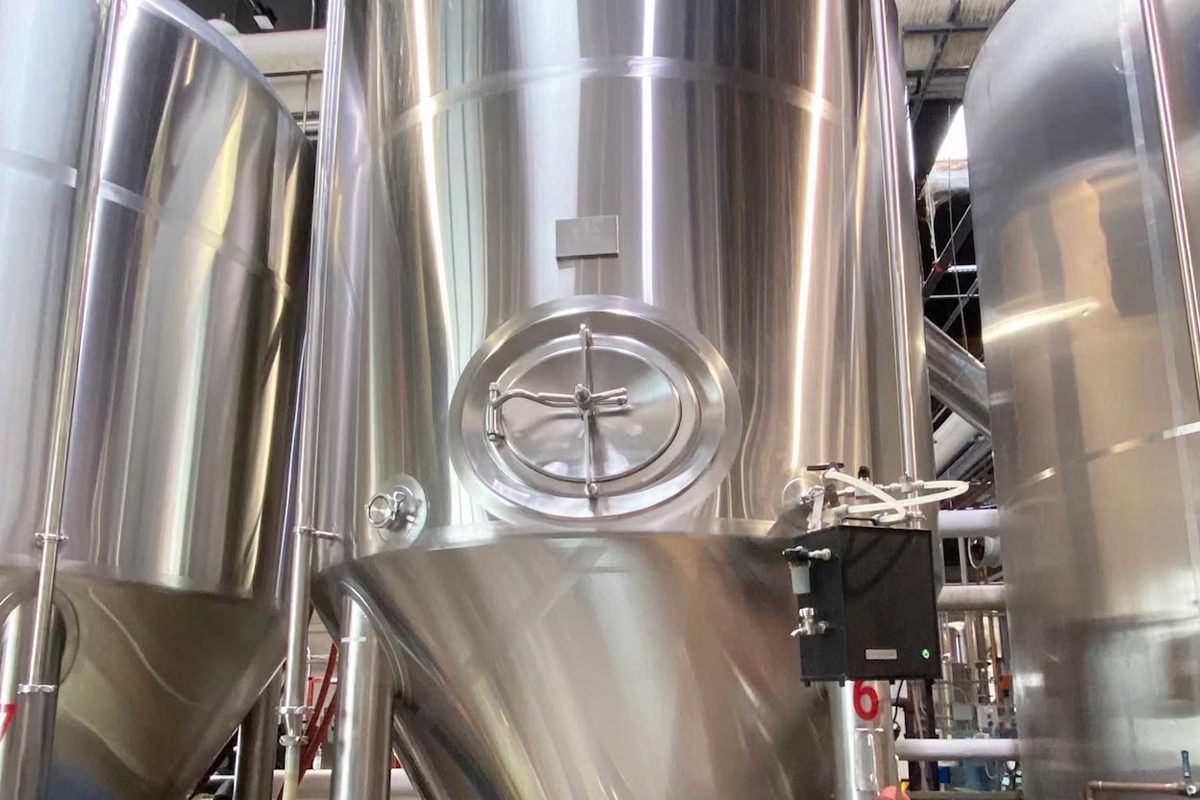
The Stages of Fermentation
Pitching the Yeast
Lag Phase
Exponential Growth Phase
Stationary Phase
Conditioning Phase
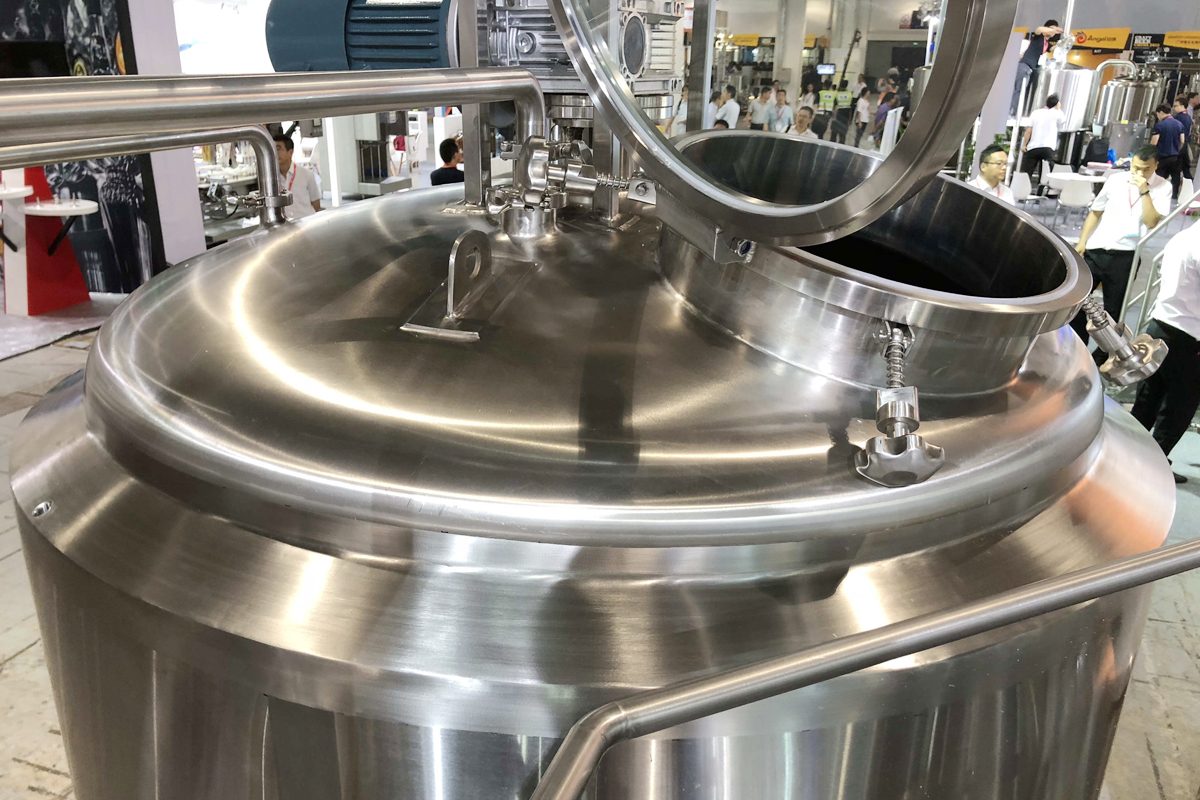
Types of Fermentation
Top Fermentation
Features of Top Fermentation
- Yeast Behavior: During top fermentation, yeast cells tend to float to the surface, forming a thick layer of foam known as krausen. This behavior is due to the yeast’s buoyancy, which is influenced by the production of CO2 during fermentation.
- Flavor Profile: Top-fermenting yeasts are known for producing a wide range of flavor compounds, including esters and phenols. Esters impart fruity flavors such as banana, pear, and apple, while phenols can contribute spicy, clove-like, or even smoky notes. These compounds are more pronounced in Ales than in lagers, leading to a more complex and diverse flavor profile.
- Beer Styles: The top fermentation process is used to produce a variety of ale styles, including pale ales, IPAs (India Pale Ales), stouts, porters, Belgian ales, and wheat beers. Each style has its unique combination of flavors, aromas, and textures, influenced by the specific yeast strain used and the fermentation conditions.
Bottom Fermentation
Features of Bottom Fermentation
- Yeast Behavior: In bottom fermentation, yeast cells tend to sink to the bottom of the fermentation tank. This sedimentation behavior helps clarify the beer as the yeast flocculates and settles, resulting in a clearer finished product.
- Flavor Profile: Bottom-fermenting yeasts produce fewer esters and phenols compared to top-fermenting yeasts, leading to a cleaner and more neutral flavor profile. This characteristic allows the malt and hops’ flavors to be more pronounced, making lagers generally smoother and crisper than ales.
- Beer Styles: Bottom fermentation is used to produce various lager styles, including pale lagers, Pilsners, Bocks, Dunkels, and Märzens. Lagers are known for their subtle flavor profiles, often featuring delicate malt sweetness, moderate hop bitterness, and a clean finish.
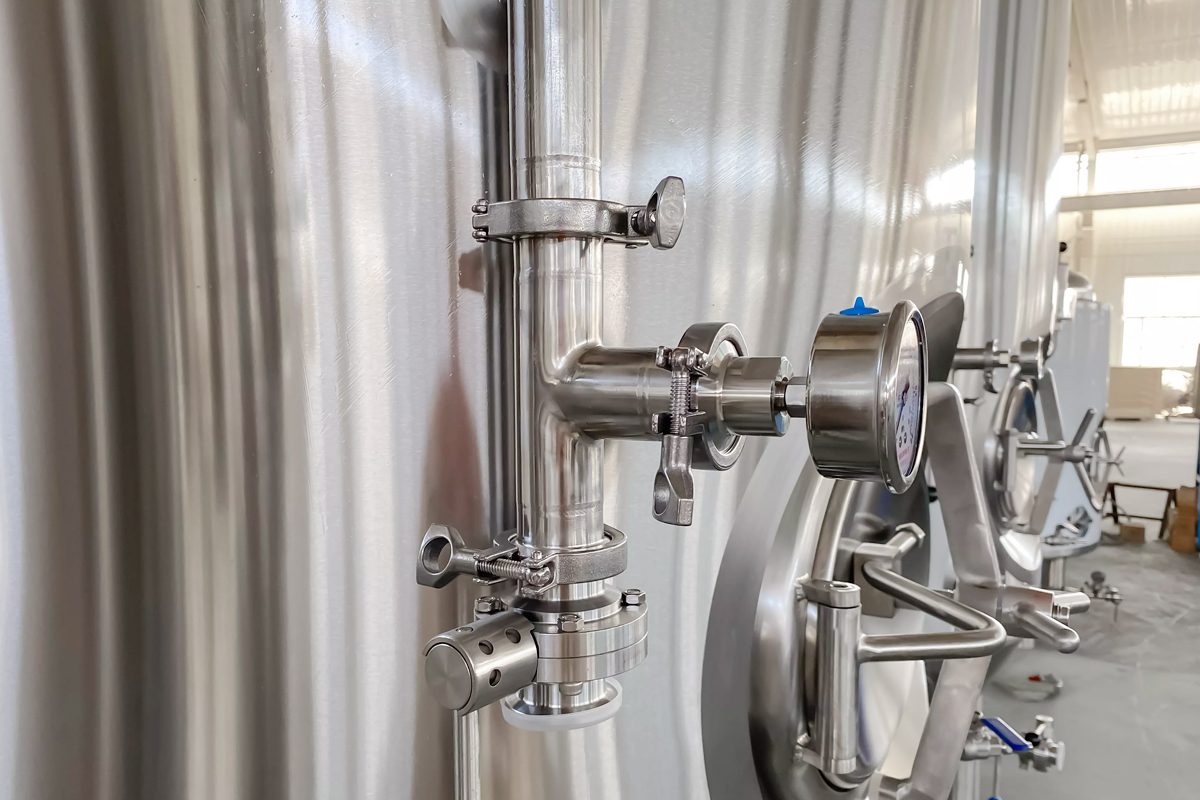
Factors Influencing Fermentation
Temperature
Effects of Temperature on Fermentation
- High Temperatures: Accelerate yeast metabolism, leading to faster fermentation. However, excessively high temperatures can result in the production of unwanted byproducts such as fusel alcohols and esters, which can impart off-flavors and harshness to the beer.
- Low Temperatures: Slow down yeast activity, resulting in a longer fermentation time. While this can lead to a cleaner and more refined flavor profile, it also requires more time and careful monitoring to avoid issues like incomplete fermentation.
Aeration
Importance of Aeration
- Yeast Growth: Proper aeration ensures that yeast has sufficient oxygen to reproduce and build healthy cell walls, leading to robust fermentation.
- Fermentation Performance: Adequate oxygen levels at the start of fermentation can help prevent issues like stuck fermentation, where yeast activity halts prematurely due to insufficient cell growth.
pH Levels
Effects of pH on Fermentation
- Optimal pH Range: Yeast performs best within a slightly acidic environment, with an optimal pH range of 4.0 to 5.0. This range promotes healthy yeast activity and helps prevent the growth of undesirable microorganisms.
- Low pH: This can inhibit yeast growth and metabolism, potentially leading to sluggish or incomplete fermentation.
- High pH: Increases the risk of bacterial contamination and can result in off-flavors.
Nutrients
Key Nutrients for Fermentation
- Nitrogen: A critical component of amino acids and proteins, necessary for yeast growth and reproduction.
- Vitamins: Such as biotin and thiamine, are essential for yeast metabolism and enzymatic reactions.
- Minerals: Including zinc, magnesium, and calcium, are required for enzyme function and cell membrane stability.
Fermentation Vessel
Types of Fermentation Vessels
- Open Fermentation tanks: Traditional vessels that allow exposure to air. They are often used in the production of certain ale styles, where exposure to oxygen can influence yeast activity and flavor development. However, open fermentation tanks require careful management to prevent contamination.
- Closed Fermentation tanks: Modern vessels that minimize oxygen exposure, helping to maintain a clean fermentation environment. These are typically made of stainless steel or food-grade plastic and are equipped with airlocks or blow-off tubes to release excess CO2.
- Conical Fermentation tanks: Specialized closed vessels with a conical bottom, allowing for easy separation of yeast and trub (sediment). They are popular among commercial brewers for their efficiency in yeast harvesting and beer clarification.
Impact on Beer Quality
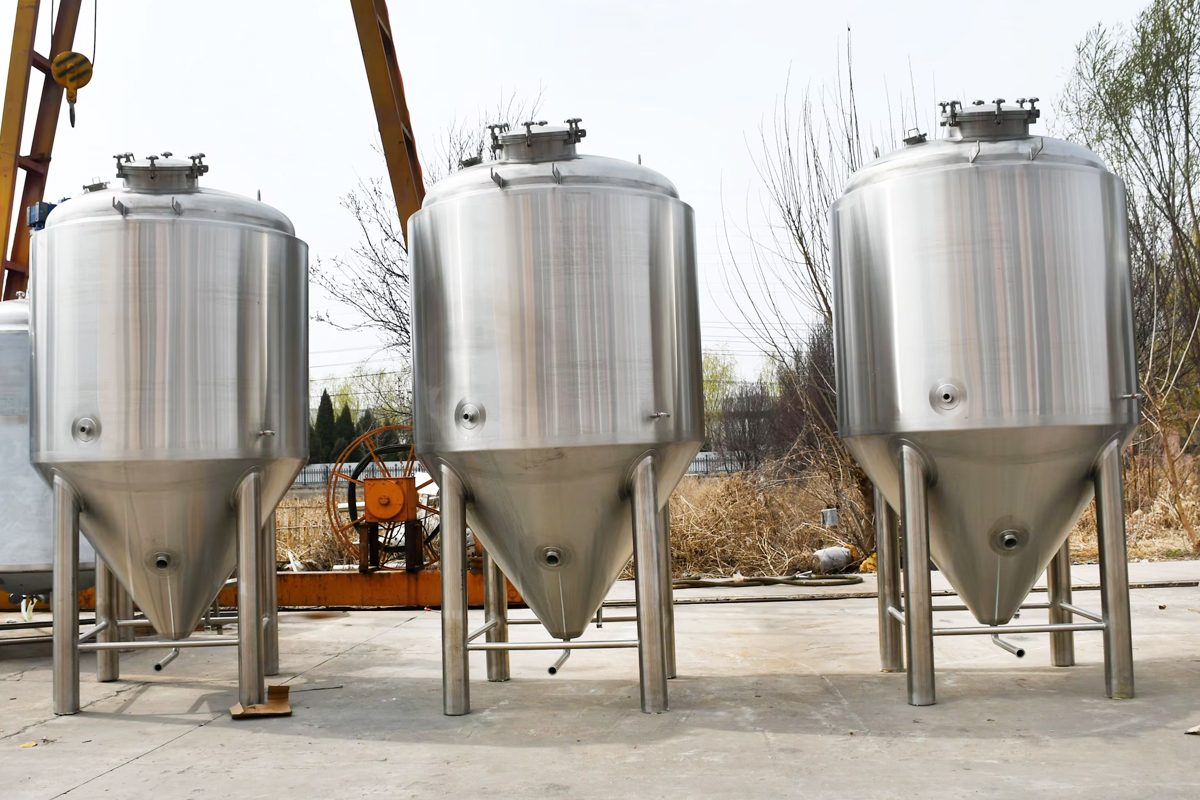
Common Fermentation Issues and Solutions
Stuck Fermentation
Stuck fermentation occurs when the yeast ceases to ferment before all the fermentable sugars are converted into alcohol and carbon dioxide. This can result in a beer that is sweeter than intended and has lower alcohol content. Several factors can lead to stuck fermentation, including:
- Insufficient Yeast Pitching: Not adding enough yeast to the wort can lead to an inadequate fermentation process, as there aren’t enough yeast cells to complete the fermentation.
- Nutrient Deficiencies: Yeast requires certain nutrients, such as nitrogen, amino acids, and vitamins, to thrive. A lack of these nutrients can hinder yeast activity.
- Temperature Issues: Fermentation temperatures that are too low can slow down yeast metabolism, causing fermentation to stop prematurely.
- High Gravity Wort: Worts with a high concentration of fermentable sugars can stress yeast, making it difficult for them to complete fermentation.
Solutions
- Re-pitch Yeast: Adding a fresh, active yeast culture can restart the fermentation process. Ensure that the new yeast is compatible with the original strain and fermentation conditions.
- Aerate the Wort: If oxygen levels were insufficient initially, carefully aerating the wort can help yeast cells regenerate and continue fermentation. This step must be done with caution to avoid oxidation.
- Adjust Temperature: Raising the fermentation temperature within the yeast’s optimal range can help restart fermentation, especially if the temperature is too low.
- Add Nutrients: Adding yeast nutrients, such as diammonium phosphate (DAP), can provide the necessary elements for yeast to resume activity.
Off-Flavors
Off-flavors are undesirable tastes and aromas in beer that can result from various fermentation issues. They can detract from the overall quality and enjoyment of the beer. Common off-flavors include:
- Diacetyl: A buttery or butterscotch flavor, often caused by incomplete fermentation or rapid cooling after fermentation. Some yeast strains produce more diacetyl, which is typically reabsorbed by the yeast during the maturation phase.
- Esters and Phenols: While some esters (fruity flavors) and phenols (spicy, clove-like flavors) are desirable in certain beer styles, excessive amounts can be considered off-flavors. These compounds are influenced by fermentation temperature and yeast strain.
- Acetaldehyde: A green apple or raw pumpkin flavor, indicating that fermentation was stopped prematurely, leaving intermediate compounds unconverted.
- Sulfur Compounds: Can produce rotten egg or sulfur-like aromas, often a result of yeast stress or contamination.
Solutions
- Proper Fermentation Temperature Control: Maintaining consistent and appropriate fermentation temperatures can minimize the production of undesirable compounds.
- Diacetyl Rest: For beers susceptible to diacetyl, such as lagers, raising the temperature slightly towards the end of fermentation can help yeast reabsorb diacetyl.
- Adequate Conditioning Time: Allowing the beer to condition properly ensures that off-flavors have time to dissipate or be reabsorbed by the yeast.
- Good Sanitation Practices: Preventing contamination by maintaining strict sanitation protocols can reduce the risk of off-flavors caused by unwanted microorganisms.
Over-Attenuation
Over-attenuation occurs when yeast ferments more sugars than intended, resulting in a beer that is drier, thinner, and higher in alcohol than expected. This can happen due to several reasons:
- High Attenuation Yeast Strain: Using a yeast strain with a high attenuation rate can lead to over-attenuation, especially if the recipe was not designed for it.
- Mashing Techniques: A long mash time or high mash temperature can create more fermentable sugars, leading to a lower final gravity than intended.
- Extended Fermentation Time: Leaving the beer on the yeast for too long can result in continued fermentation, even after primary fermentation appears complete.
Solutions
- Select Appropriate Yeast Strain: Choose a yeast strain with an attenuation rate that matches the desired final gravity and beer style.
- Mash Control: Carefully control the mash temperature and time to produce the desired balance of fermentable and unfermentable sugars.
- Monitor Fermentation: Regularly check the gravity of the beer to ensure it reaches the target final gravity. If fermentation appears to continue beyond the desired point, consider racking the beer off the yeast to halt further attenuation.
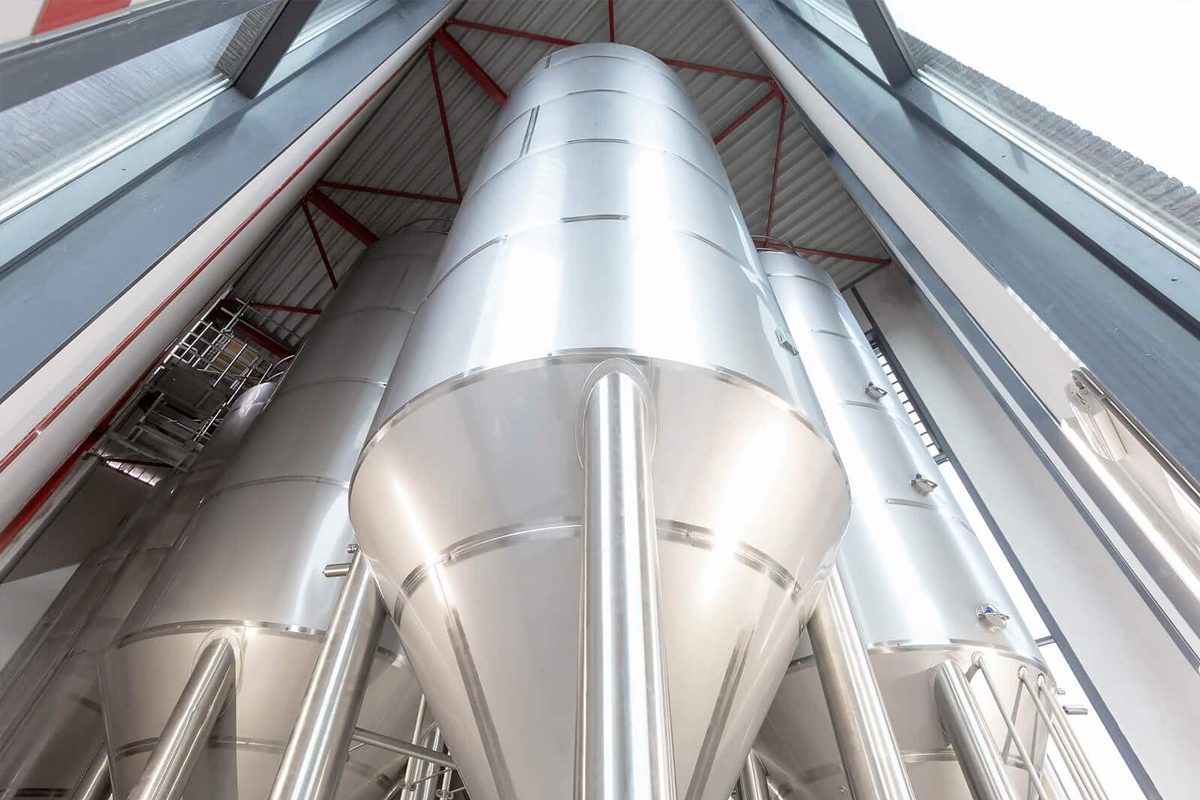
Summary
